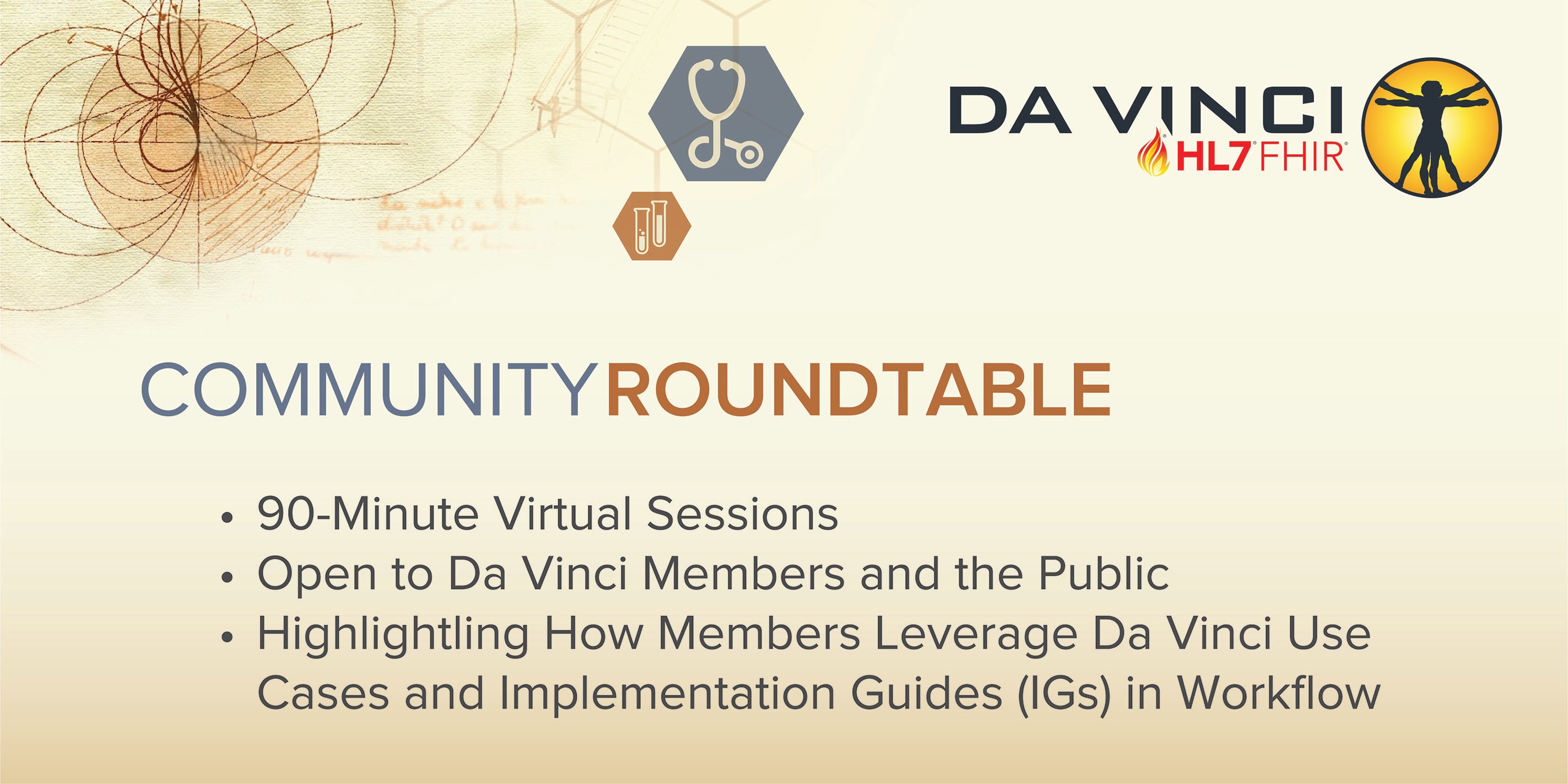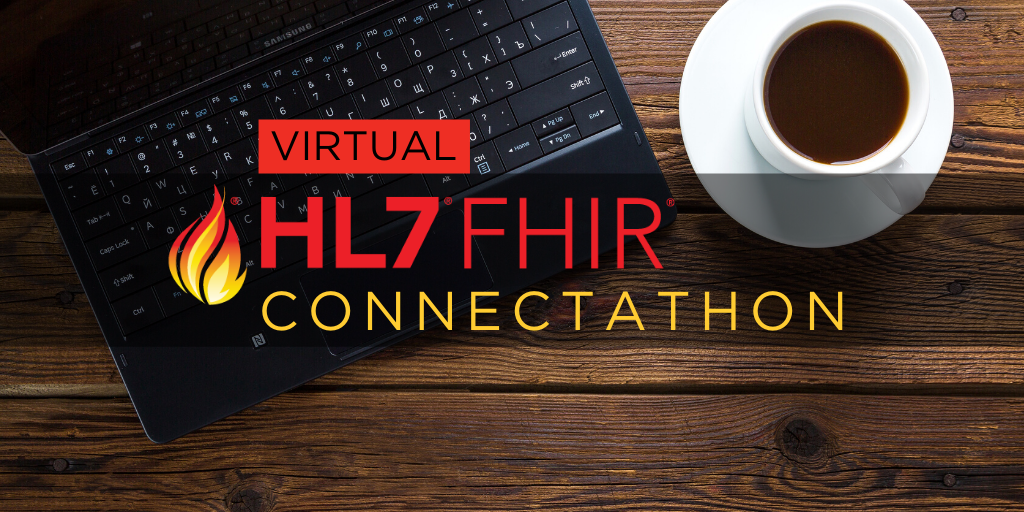July Connectathon Brings Implementers Together; Plan Now for September Connectathon
[fa icon="calendar'] Aug 22, 2022 3:00:13 PM / by HL7 posted in HL7, health IT policy, interoperability, SMART on FHIR, health IT, CMS, Da Vinci, FHIR Accelerator, FHIR Connectathon, FHIR Implementation Guides, FHIR API
HL7® Da Vinci Project Names Eight Health IT Professionals ‘2021 Community Champions’
[fa icon="calendar'] Aug 18, 2022 9:03:00 AM / by HL7 posted in FHIR, HL7, health IT, Da Vinci, FHIR Accelerator, Da Vinci Champions
The HL7 Da Vinci Project recently named eight healthcare technology experts as its 2021 Da Vinci Community Champions. The individuals recognized for this prestigious honor represent the diverse membership of the HL7® Da Vinci Project, a collaborative multi-stakeholder effort including health plans, hospital systems, accountable care organizations (ACOs) and technology vendors. The awards were announced on July 20, 2022, at the monthly HL7 Da Vinci Project member meeting. This is the second year in which the HL7® Da Vinci Project has recognized innovative leaders in health IT who are helping to guide the evolution of the HL7 Fast Healthcare Interoperability Resources (FHIR®) standard.
As a designated HL7 FHIR accelerator program, the Da Vinci Project is a private sector consortium dedicated to improving the healthcare delivery system by accelerating interoperability standards to support value-based care, reduce administrative burden, automate workflow and improve provider teams’ ability to impact health outcomes.
Last year, the Da Vinci Project leadership created the Community Champions Program to recognize and celebrate the talented problem solvers advancing interoperability within the industry. The Community Champion Program puts a spotlight on individuals who display the unique traits of “industry above self, a passion for making the healthcare system work better, supporting others, and promoting change.”
Learn How UC Davis Health, Centene and InterSystems Use HL7 Da Vinci Implementation Guides to Tackle Prior Authorization at the HL7 Da Vinci Community Roundtable
[fa icon="calendar'] Aug 16, 2022 10:20:39 AM / by Leslie Amorós posted in FHIR, interoperability, Da Vinci, prior authorization, FHIR Accelerator
The HL7 Da Vinci Project’s August Community Roundtable to be held August 24 from 4:00 – 5:30 p.m. ET
Da Vinci’s Community Roundtable returns after a summer hiatus with a powerful program highlighting a real-world implementation of Da Vinci’s Prior Authorization Implementation Guides.
“Celebrating HL7 FHIR's Success: From Champions to Prior Authorization Implementers,” will begin with a program update and brief recognition of the 2021 HL7 Da Vinci Community Champions, showcasing individuals making significant contributions to advancing value-based care by leveraging HL7 Fast Healthcare Interoperability Resources (FHIR®) and making the outputs of Da Vinci real.
After the updates, representatives of the 646-bed health system UC Davis Health, the 25.4-million-member payer Centene, and technology solutions vendor InterSystems will discuss their Da Vinci prior authorization journey and the benefits achieved to date.
Presenters for next week’s session include:
- Howard Cohen, Director, Advanced Technology Team, Centene
- Michael B. Marchant, Director, Health Information Exchange, UC Davis Health
- Lynda Rowe, Senior Advisor, Value-based Markets, InterSystems
- Mahesh Siddanati, Vice President, Digital Solutions and Product (Regulatory and Quality), Centene
Attendees will hear first-hand accounts of the considerations, challenges and benefits of working together to establish infrastructure to streamline prior authorization workflows, remove latency and enable real-time data sharing.
Explore Interoperability Governance at Upcoming HL7 Da Vinci Project Community Roundtable
[fa icon="calendar'] Apr 22, 2022 9:30:43 AM / by Leslie Amorós posted in FHIR, interoperability, Da Vinci, FHIR Accelerator, governance
The Da Vinci Project’s April Community Roundtable to be held April 27 from 4:00 – 5:30 p.m. ET
Why does interoperability require governance? Find out at this month’s April HL7 Da Vinci Community Roundtable.
This month’s session, Effective Interoperability Governance: The People, Processes and Data, features multiple vantage points to approaching interoperability governance and its complexities in our HL7 FHIR API landscape around people, processes and data.
Learn about the meaning of governance and the importance, challenges and lessons learned when applying these guardrails from four different perspectives: an Accountable Care Organization, an academic medical center, a payer and an IT vendor. Critical considerations around process controls, systems and frameworks will also be addressed.
Presenters include:
- Michael Gould, Business Lead – Interoperability, Blue Cross Blue Shield Association
- Michael B. Marchant, Director, Health Information Exchange, UC Davis Health
- Charlotte Morris, Data Governance Program Director, MultiCare Connected Care
- Lukasz Nosol, Senior Director, Software Development - Enterprise Clinical Integration and Interoperability, Optum
January FHIR Connectathon Touted a Success: Register Now for May
[fa icon="calendar'] Apr 12, 2022 4:51:57 PM / by Diana Manos posted in FHIR, Payers, Da Vinci, FHIR Accelerator, FHIR Connectathon, FHIR Community
Da Vinci is creating the foundation to solve large scale industry problems.
The HL7 January FHIR Connectathon was a success, with all examples from the implementation guides (IGs) tested, including over 20 test cases.
The HL7 Da Vinci Project, through its efforts that include Connectathons, “continues to focus on solving real-world data exchange challenges between payers and providers,” said Vanessa Candelora, Da Vinci’s project manager and senior consultant with Point-of-Care Partners, at the Jan. 26 Da Vinci Community Roundtable. “Da Vinci is creating the foundation to solve large scale industry problems, including, risk and quality data sharing and workflow; unlocking data or freeing data needed for patient costs; and reducing provider burden.”
Candelora called HL7 Connectathons, “a fundamentally human-powered endeavor,” praising Da Vinci as “a really great community,” with a multi-stakeholder membership that includes providers, payers, vendors, industry partners and EHRs. “We continue to grow and learn from each other in this party of the willing.”
Candelora added that founders of Da Vinci are pleased with the amount of work the group has accomplished in such a short time. “They really couldn't have envisioned the impact and the progress that this project has made,” she said.
Upcoming Roundtable Provides Essential Implementation Guide Primer
[fa icon="calendar'] Mar 25, 2022 11:36:40 AM / by Leslie Amorós posted in FHIR, Payers, Da Vinci, value based care, FHIR Accelerator
The Da Vinci Project’s March Community Roundtable to be held March 30 from 4:00 – 5:30 p.m. ET
Invite your product and technical teams to register for March's HL7 Da Vinci Project Community Roundtable Ready, Set, Test: Prepare Now to Test Da Vinci Implementation Guides.
This essential primer will delve into the IGs and help you identify what you want to test, who needs to be involved, and the tools involved in the testing process so that you are prepared for HL7 and CMS Connectathons.
This session will provide brief updates on Implementation Guides (IGs) and use cases as well as resources to aid testing and Connectathon preparation efforts.
With this basic knowledge you can create your own roadmap to readiness while helping improve industry interoperability.
Speakers:- Vanessa Candelora, HL7 Da Vinci Project Manager, and Senior Consultant, Point-of-Care-Partners
- Robert Dieterle, Da Vinci Sr. Advisor and Chief Executive Officer, EnableCare, LLC
- Yan Heras, HL7 Da Vinci Project Lead and Technical Advisor, and Principal Informaticist, Optimum eHealth
HL7 Da Vinci Going Strong at HIMSS22 With Lots to Offer
[fa icon="calendar'] Mar 15, 2022 11:15:34 AM / by Diana Manos posted in FHIR, HIMSS, Payers, Da Vinci, value based care, FHIR Accelerator
Sessions Begin Today at HIMSS22
They say it takes a village to raise a child, but did you know it also takes a village to pursue interoperability? The HL7 Da Vinci Village is at HIMSS22 in Orlando this week, March 14-18. Also featured at the conference will be approximately 20 Da Vinci member organizations, presenting in 60-minute general education sessions and 20-minute Spotlight Theater and Innovation Live sessions—all aimed at helping to solve interoperability challenges.
Kiosk Village
HL7 Da Vinci Project Kiosk Village will be located in the Interoperability Showcase, Hall E Booth, #8240 at Kiosks 9 -16. Stop by to learn more about The Da Vinci Project’s efforts and how you can access resources.
Marketplace Kiosks at the HL7 Da Vinci Village include:
- Kiosk 12 & 13: HL7 Da Vinci Project
- Kiosk 9: healow Insights
- Kiosk 10: Cognizant
- Kiosk 11: InterSystems Corporation
- Kiosk 14: Anthem, Inc.
- Kiosk 15: Edifecs
- Kiosk 16: Optum
Member Booth HL7 Da Vinci Office Hours
Learn more by stopping by member booths when HL7 Da Vinci Project PMO staff are on hand to answer questions. They include:
- Change Healthcare, Booth # 1531, Wednesday, March 16, 10:30 – 11:15 a.m.
- Edifecs, Booth # 5171, Wednesday, March 16, 4 – 4:30 p.m.
- MCG, Booth # 8185, March 15, 3:30 – 4 p.m.
- Smile CDR Inc., Booth #3901, March 15, 4:15 – 4:35 p.m.
Da Vinci to Feature the Role of EHRs in Advancing Interoperability at February Community Roundtable
[fa icon="calendar'] Feb 21, 2022 4:12:34 PM / by Diana Manos posted in FHIR, Payers, Da Vinci, value based care, FHIR Accelerator
Executives From Allscripts, healow Insights Will Share Their Latest Efforts Using FHIR Guidelines
The Da Vinci Project’s February Community Roundtable to be held Feb. 23 from 4:00 – 5:30 p.m. ET
In this month’s Community Roundtable, the HL7 Da Vinci Project is exploring how EHRs are key to interoperability success with a discussion on electronic health record (EHR) vendors featuring Allscripts and healow Insights.
The session will showcase how the role of HL7® Fast Healthcare Interoperability Resource (FHIR®) and the Da Vinci implementation guides are impacting their product roadmaps and related integration efforts to improve workflow, maximize efficiencies and improve patient care. Guest speakers will include:
- Jeff Danford, Sr. Principal Software Engineer, Allscripts
- Seth Paradis, Sales and Business Development Manager, Payer Engagement Division, healow Insights
US Realm Steering Committee February 2022 Update
[fa icon="calendar'] Feb 11, 2022 2:28:19 PM / by HL7 posted in FHIR, HL7, HL7 community, Argonaut Project, health IT, C-CDA, Da Vinci, CARIN Alliance, documentation templates and payer rules, FHIR Accelerator, FAST, Gravity, Vulcan, FHIR Community, US Realm
On behalf of the HL7 US Realm Steering Committee (USRSC), we are pleased to share an update on last year's priorities and highlight our focus for 2022.
2021 Highlights
Visibility was a key theme of our work in 2021 and included supporting pilot work on a standards dashboard, tracking accelerator activity and promoting key ballots.
Before we dive into 2022, we want to highlight a few key points for all US Realm (USR) members.
- SMART v2: published new guidance on granular controls
- Bulk Data v2: published with numerous new features
- Errata release of Consolidated CDA (C-CDA): companion guide to support January 2022 ballot
- C-CDA Companion Guide: January 2022 ballot to add USCDI v2 guidance
- US FHIR Core - January 2022 ballot: to add USCDI v2 guidance
- Hosted reviews on HL7 Standards Dashboard Prototype
- C-CDA Web Publishing Trial Draft using FHIR Structure Definition
- Facilitated US@ project with ONC team
Jump Start Your 2022 Implementation Efforts With Da Vinci’s January Community Roundtable
[fa icon="calendar'] Jan 25, 2022 3:54:20 PM / by Diana Manos posted in FHIR, Payers, Da Vinci, value based care, FHIR Accelerator
The Da Vinci Project’s January Community Roundtable to be held Jan. 26 from 4:00 – 5:30 p.m. ET


.png)
.png)



